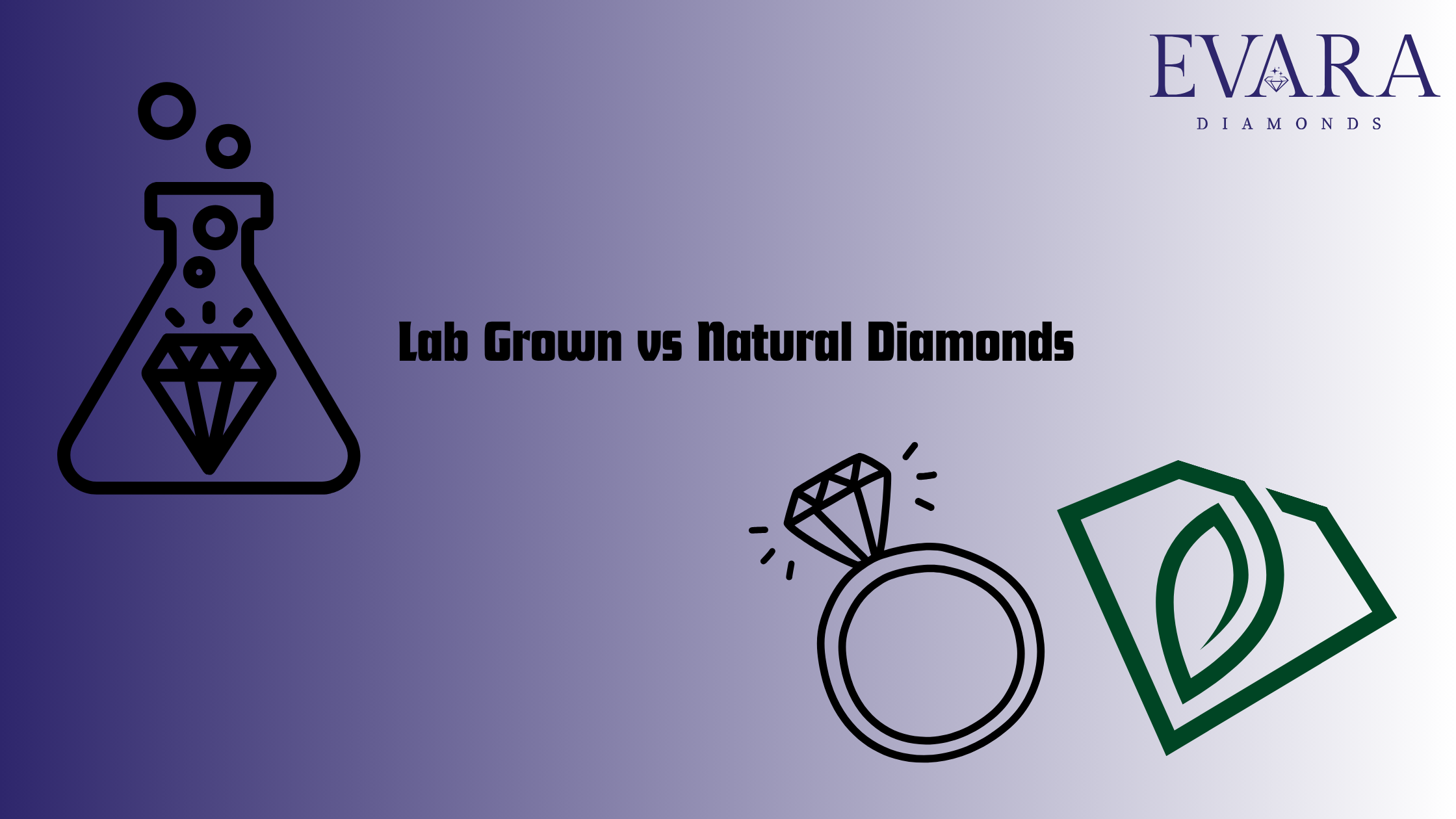Lab Diamonds vs Natural Diamonds: What’s the Real Difference?

Lab Diamonds vs Natural Diamonds: What’s the Real Difference?
When it comes to choosing the perfect diamond, the question often arises: lab-grown vs natural diamonds—which one is better?
Both are stunning, both are real, and both have their own advantages. But if you’re looking for something timeless, emotionally resonant, and inherently valuable, natural diamonds still hold a special place.
Explore our natural diamond collection
What Are Lab-Grown v Natural Diamonds?
Lab-grown (also known as lab-created or synthetic) diamonds are produced in controlled environments using high-tech processes like HPHT (High Pressure High Temperature) or CVD (Chemical Vapor Deposition). They are chemically and visually identical to natural diamonds—but created in a matter of weeks.
They offer an accessible entry point for those seeking size and sparkle on a budget. But the story ends there.
What Are Natural Diamonds?
Natural diamonds are formed deep within the Earth over billions of years. Each stone is a marvel of time, pressure, and nature—making it truly unique. From origin to brilliance, natural diamonds carry legacy, rarity, and emotional depththat simply can’t be replicated.
Design your own engagement ring
Appearance & Brilliance
To the naked eye, both diamond types look identical. However, under specialized tools, natural diamonds often display subtle growth patterns and imperfections that tell a story—a hallmark of their authenticity.
Lab diamonds are flawless in a technical sense—but often lack the soul and history that natural diamonds inherently possess.
In Lab-Grown vs Natural Diamonds, the appearance and brilliance is the same but there is a lack of soul and history.
Price & Value
Yes, lab diamonds are significantly cheaper—often 40% to 70% less for the same carat and clarity. But this affordability comes with a caveat.
-
Natural diamonds hold long-term value.
-
Lab-grown diamonds depreciate quickly, with resale values dropping dramatically over time.
So while lab diamonds may seem like a savvy purchase today, they may not stand the test of time—financially or sentimentally.
Understand how natural diamond prices vary by carat, color, and clarity
Sustainability & Ethics
Lab diamonds are marketed as the ethical choice. No mining, less land use. However, the reality is more nuanced.
-
Many lab-grown facilities use high amounts of energy, often powered by fossil fuels.
-
Natural diamond mining today is highly regulated, with many mines certified for ethical practices and community support programs.
Natural diamonds also contribute to employment, education, and healthcare in mining communities—especially in Africa and Canada.
Symbolism & Emotional Significance
This is where natural diamonds quietly shine. When you gift or wear a natural diamond, you’re holding a piece of Earth’s ancient past. It carries weight—not just in grams, but in meaning.
Lab diamonds are beautiful, yes. But natural diamonds are eternal, passed down through generations as heirlooms—a story in stone.
Learn what GIA says about lab-grown diamonds
Final Comparison
| Feature | Lab-Grown Diamond | Natural Diamond |
|---|---|---|
| Formation Time | Few weeks in a lab | 1–3 billion years |
| Price | Lower upfront | Higher, holds value |
| Resale Value | Low to none | Retains value |
| Symbolism | Modern, affordable | Historic, emotional |
| Sustainability | Claimed green | Ethical sourcing improving |
| Emotional Worth | Mass-produced | One-of-a-kind |
Which One Is Right for You Lab-Grown vs Natural Diamonds?
Choose a lab diamond if:
-
You want more size for less cost.
-
You don’t plan to resell or pass it down.
Choose a natural diamond if:
-
You want something that retains value.
-
You believe in timeless beauty and emotional legacy.
-
You’re investing in a piece of the Earth’s history.
Explore the timeless beauty of natural diamonds
Frequently Asked Questions (FAQs) for Lab-Grown vs Natural Diamonds.
Are lab diamonds real?
Yes, they are real diamonds in terms of composition. But they are not naturally formed—they’re man-made.
Why are natural diamonds more expensive?
Natural diamonds are rarer, take billions of years to form, and hold long-term value. Their pricing reflects their scarcity and legacy.
Do lab diamonds hold resale value?
No. Unlike natural diamonds, lab-grown diamonds have very low resale demand, and prices drop significantly after purchase.
Which is more ethical: lab or natural diamonds?
Lab diamonds avoid mining, but many use fossil-fuel-heavy energy. Natural diamonds now follow strict ethical sourcing through initiatives like the Kimberley Process and support local economies.
Can you tell the difference?
To the eye, no. But with gemological tools, yes—natural diamonds show patterns of time and formation.